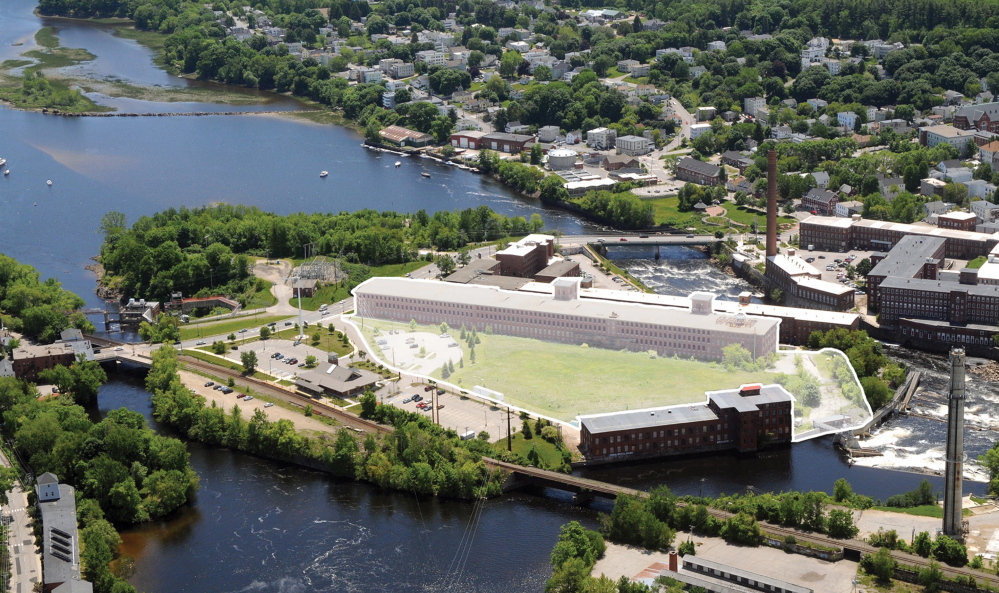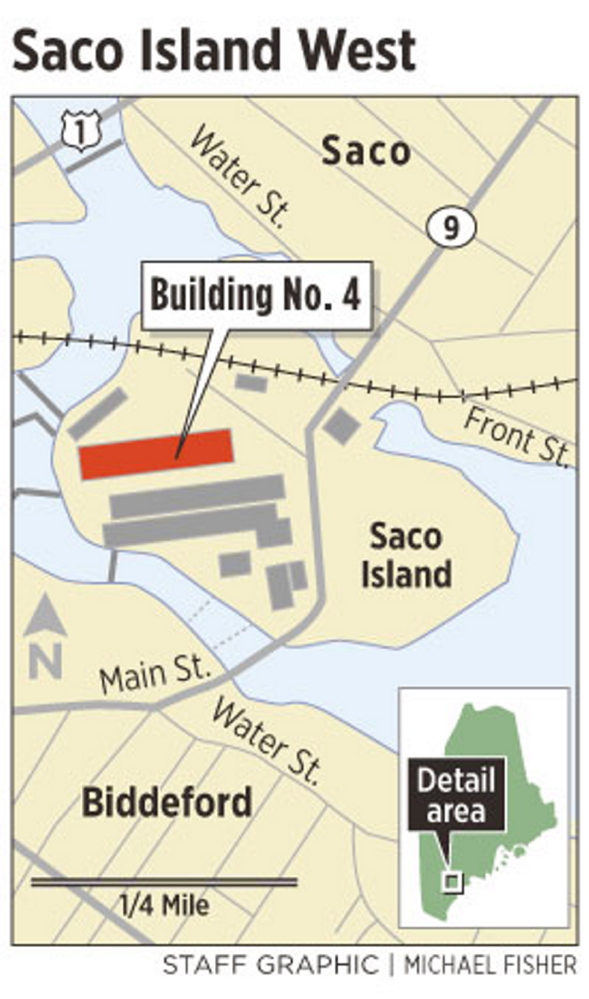A huge empty mill building on Saco Island with nearly a quarter of a million square feet of space is going to be converted to housing and retail space, Saco’s mayor said Friday.
Don Pilon said the building is under contract to Chinburg Properties of Newmarket, New Hampshire, and the sale is expected to close by the end of September.
Pilon said he didn’t know the sale price or value of the project, which would create 140 units of market-priced housing and retail space. He said the developers told him the project would include amenities such as a health club and conference rooms.
Calls to Chinburg Properties were not returned late Friday. The company’s website says it was founded in 1987 and specializes in single-family and multi-unit housing projects, including redevelopment of former mill properties.
Dan Greenstein, a partner at CBRE/The Boulos company, confirmed that the property was under contract, but said he wasn’t allowed to identify the buyer or say what it will be sold for. He did say there was more than one offer on the building and confirmed that the sale is scheduled to close in 30 days.
The project will fill a key piece of property between Saco’s train station, the already developed mill Building 2 in Saco and the Pepperell Mill in Biddeford, which is being renovated into a large mixed-use development, Pilon said.
“I think it obviously closes the gap between the main streets and really connects Biddeford and Saco and brings jobs and housing for young people,” Pilon said. “I’m a real estate guy and I’m happy this is happening on my watch.”
The property, known as Saco Island West Building Number 4 and built in 1841, is already zoned for mixed-use and was considered prime for redevelopment until 2008, when the recession put the brakes on speculative housing development.
Pilon said the developers are looking for tax increment financing, in which a portion of the increased property taxes generated by the development are returned to the developer or invested in infrastructure to support the project.
He said he didn’t have any details on how much of a TIF the developers are seeking or what the money will be used for, but said that would be discussed as part of a meeting on Sept. 16, when Chinburg Properties will make an informal presentation of their plans to the City Council.
The development will need to be approved by the Saco Planning Board and council, Pilon said, and assuming there are no hitches in that process, Chinburg officials indicated to the mayor that they would start construction next spring. The company didn’t provide an estimate of when the work will be done, but Pilon said the construction could generate 200 to 400 jobs.
According to Pilon, the developers said they would try to attract local owners for stores in the complex and didn’t plan to lease to many, or possibly any, chain retailers.
Pilon said a major factor in the project going ahead was the removal of the Maine Energy Recovery Co. trash-to-energy incinerator in downtown Biddeford, which was within sight of Saco Island. Residents complained for years about the noise and smell of garbage trucks rumbling through downtown Biddeford and smoke billowing from the large smokestack. The plant was finally sold to the city of Biddeford in 2012 and dismantled last year.
“That was huge, not only for this project but also for the whole Biddeford-Saco revitalization,” Pilon said of the removal of the MERC plant. Once the plant was taken apart, he said, work on a low-income housing project elsewhere on Saco Island resumed and the renovation of the Pepperell Mill in Biddeford picked up.
“No one wanted to live in mills that close to MERC,” Pilon said. “The noise, the smell, the soot.”
Interest in Biddeford and Saco from restaurateurs, boutique owners and artists looking for studio space has perked up in recent years, Pilon said.
Saco Island’s history as an industrial site dates back to 1653, when a sawmill was built there, according to an article on the city’s website written by Thomas Hardiman, the curator of the Saco Museum. Hardiman said a cotton mill built there in 1826 was the largest in the country at that time. That mill attracted other textile mills, which operated until the late 1950s.
In a news release issued Friday, Biddeford Mayor Alan Casavant said the project shows redevelopment momentum is growing in the downtowns.
“So I look at this as outstanding news for Biddeford, because the successful revitalization of downtown Biddeford-Saco is reaching a very positive tipping point,” he said.
Copy the Story LinkSend questions/comments to the editors.




Success. Please wait for the page to reload. If the page does not reload within 5 seconds, please refresh the page.
Enter your email and password to access comments.
Hi, to comment on stories you must . This profile is in addition to your subscription and website login.
Already have a commenting profile? .
Invalid username/password.
Please check your email to confirm and complete your registration.
Only subscribers are eligible to post comments. Please subscribe or login first for digital access. Here’s why.
Use the form below to reset your password. When you've submitted your account email, we will send an email with a reset code.